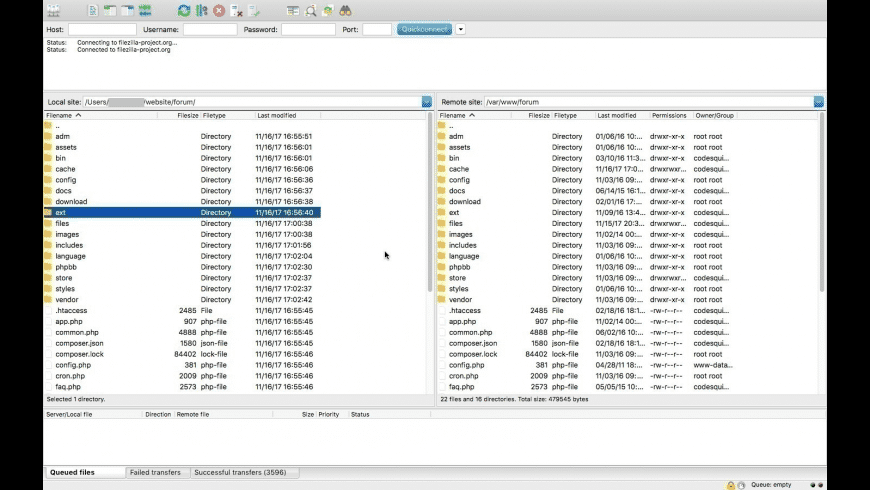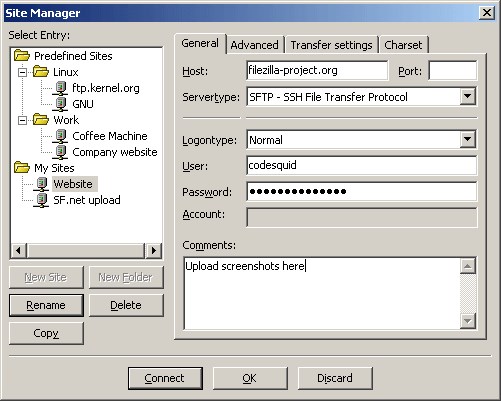

Unless you have specialized needs or strongly held preferences, you’re best avoiding FileZilla and sticking with Cyberduck.
Filezilla or cyberduck for mac mac#
But if this is the case, you might be better off splurging for Transmit or Yummy FTP.Īdvantages to Cyberduck: Cyberduck is easier to use, has a polished interface and fits in nicely with the Mac experience. You may prefer having local and remote files in one window as it can be a nuisance sometimes to navigate to the local files you want in the Finder. I’ve used Cyberduck for a few years now, and have never known it to crash or quit in the middle of a transfer - although that doesn’t mean it hasn’t happened to other people. But in my admittedly simple tests I could see no appreciable difference in speed. ” The point, though, is that something so basic should be a snap to figure out.Īdvantages to FileZilla: I’ve read reports of FileZilla being faster and more stable. Likely I’ll be embarrassed anyway with a comment below starting with, “Well, all you have to do is. I was too embarrassed to actually pose the question. I did a search on “delete” at the forums - nada.

I checked the sparse documentation and the FAQ at the FileZilla website - nothing. Uploading a 652 KB JPEG took about 40 seconds in both cases.Įase of use: I’m certain there must be a way to delete remote files, but I couldn’t find it with FileZilla. Speed: Connecting to the SFTP server used for the thriftmac website took only a couple of seconds with either app.

I couldn’t find anything comparable in FileZilla. Cyberduck also has a collection of bookmarks available at the click of a button. Fortunately, tooltips show up when you hover over them.Ĭonnections: Both have a Quick Connection dropdown menu that you can fill with frequently visited sites. Below is an example of two particularly bizarre FileZilla icons. FileZilla’s toolbar is cluttered by comparison, and the icons are both ugly and indecipherable. A customization option allows you to add more. Toolbar: Cyberduck has only a few icons and it is easy to understand what they do. There is no pane for local files as there is in FileZilla and other FTP programs such as Transmit, but it’s easy enough to view them in the Finder and drag-and-drop from there. You double-click on folders to open them as you would in the Finder. Cyberduck has just one pane, which lists the files in a remote server. I’ve never seen anything quite like it before in a Mac program, and found it confusing and non-intuitive. The top pane on each side is meant to help you navigate through folders and see what’s inside them as represented by the lower pane. Two the right represent remote files on a server. Two on the left represent local files on your hard drive. Interface overview: FileZilla has four panes. I have a feeling, though, that it may start to bog down again over time. Cyberduck used to take a few seconds, but with the latest version is a lot speedier. Read on for a blow-by-blow comparison between Cyberduck 3.0.2 and FileZilla 3.1.0.1 to see who wins. But could it possibly unseat my old favourite, Cyberduck. Lo and behold: not only did it launch - it launched fast. In the interim, though, FileZilla has been updated on a regular basis, so I decided to give it another chance. I didn’t get far with the review because I couldn’t get FileZilla to launch, and the sheer ugliness of it made this a relief. Cyberduck has long been the freeware FTP app of choice here, with OneButton FTP a distant but worthy second. Almost a year ago, I began to write a review of FileZilla, an open source FTP program that appeared to hold promise as a contender for inclusion in the thriftmac collection.


 0 kommentar(er)
0 kommentar(er)
